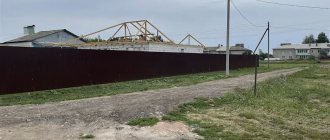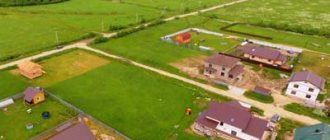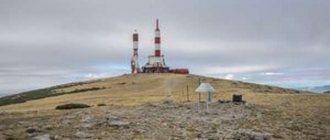Among the terms that define the features of the use of land plots, there is the concept of “public land”. It denotes territories where all citizens have the right to be, without special permits or admissions.
They can not only be there, but also operate various objects on the site. Land owned or used by the people is also protected by state laws, as are privately owned territories.
But it is public land that causes the most disputes and conflicts in the land sector, and often such conflicts are difficult to resolve; it is necessary to carefully study the case and all the laws that relate to it.
Quite often, judicial practice considers unauthorized seizure of a land plot; these offenses are within the scope of action of state inspectors specially involved in the protection of land plots. They determine the elements of the offense and the method of protecting the land from invaders.
Illegal land seizure
In populated areas and in territories adjacent to them, public lands are highways, alleys, various passages, and ponds (as part of the territory of a gardening or vegetable farming partnership).
ATTENTION! Such land is owned by the municipal government or the state. Everyone has access to such areas; no one needs to obtain a legal permit.
According to the Land Code, only its owners can use a land plot at their own discretion (but taking into account the legal status). Various government bodies monitor the implementation of this rule - Municipal Land Control, State Land Control, territorial self-government bodies.
Owners and tenants also control the legality of exploitation of land plots.
Despite such comprehensive control, there are often precedents associated with the seizure of plots of a particular area and their use at one’s own discretion. This is considered a serious offence.
According to Government Decree No. 689 of November 15, 2006 (it is called “On State Land Control”), land plots cannot be seized without permission by either legal entities or individuals.
- Ownership of a land plot must be documented, and there must also be a permit to conduct various economic activities on the land. If land privatization has been carried out, the process is also documented. The protection of land resources is carried out not only by this resolution, but also by the Land Code.
- In cases where there is an illegal seizure of public land and blocking access to it for other citizens, it is imperative to give a signal about the incident.
- A complaint or appeal regarding the seizure of land should lead to verification actions by the responsible organizations. Complaints from both individuals and legal entities are considered.
If there is an offense, where to complain? Many state regulatory bodies have been created for issues related to the right to use land, unauthorized seizure and use. These are State Land Control, Compulsory Medical Insurance, public organizations, law enforcement agencies.
You can contact any of these authorities. But the main organization is Rosreestr.
What is PDO
According to the law, PDO are those territories that belong to all people, as social. space is territories that do not have an owner and cannot have one.
According to the way these land plots are defined by the Land and Town Planning Codes of Russia, PDO are plots and territories that are used as communication routes, as places for recreation, as well as zones for the industrial needs of society.
According to the law, it is allowed to erect capital structures on such land, as well as carry out non-capital construction. But at the same time, construction must correspond to the general purpose of the land.
Legislation
Unauthorized seizure of a plot involves its exploitation by a person who does not have ownership rights to this land area. There may be an illegal building on land, installation of a fence, or other use of municipal land without permission.
Self-occupation can be determined in the absence of an agreement, a document on ownership or privatization, or any legal confirmation of the right to lease or operate the site.
The use may be the illegal installation of a fence, the construction of some objects, this also includes the cultivation of areas for agricultural plantings. Such illegal actions with land are considered taking into account Article 7.1 of the Code of Administrative Offenses of the Russian Federation.
Many disputes regarding land areas arise among members of gardening and vegetable farming partnerships, and between neighbors of dacha or ordinary villages. Applications and complaints are submitted to regulatory authorities that public land spaces are being littered with garbage from private yards or that a neighbor has seized part of the road for his own plot.
ATTENTION! Self-occupation is considered as an action that leads to the use of a site.
All about punishment
As noted earlier, all violations regarding common land must be provided for by Russian law. This type of violation of land use, such as unauthorized seizure, is considered an administrative offense and is controlled by Art.
7.1 of Chapter 7 of the Code of Administrative Offenses of the Russian Federation. Investigations into this violation are carried out by state inspectors specializing in the operation and protection of those storage facilities that are included in the Russian register. The article dealing with this offense is called “Unauthorized occupation of a plot of land.”
According to it, the seizure of common land, at will, without obtaining the documents provided for by law (or in situations where there are no papers to permit economic work), entails administrative punishment. Namely, a fine is imposed for individuals. persons in the amount of 500 rubles, for an official from 1000 to 2000 and for legal entities. persons from 2000 to 20000 rub.
ATTENTION! In addition, Art. No. 21 of Chapter 23 of the Code of Administrative Offenses of the Russian Federation, which is called “Bodies exercising state control over the use and protection of land.”
The bodies listed in this article may consider those cases that relate to the cases specified in Art. 7.10, 7.2 (part 1), 7.1 (to the extent of unauthorized assignment of the right to exploit the site and exchange land), and also in Art. 8.8., 7.34 Code of Administrative Offenses of Russia.
These bodies are:
- Chief State Inspector of Russia for the protection and use of land, as well as his deputies.
- Chief inspectors of individual regions of the country for the protection and operation of PDO.
- Chief city and district state inspectors for the protection and exploitation of land.
Causes
The reasons for capture can be very different. The most serious violation of the exploitation of non-owned land is the construction of a permanent structure, which happens quite often.
Citizens are also trying to build a garage or outbuilding on land that is common property. Minor violations include failure to respect plot boundaries, storage and warehousing of various building materials outside of one’s own land, and loss of documents confirming the right to a plot.
Land protection
The definition of legal protection of land resources includes a system of measures enshrined in legislation that are aimed at ensuring the rational exploitation of lands, preserving and increasing their fertility, and protecting them from destruction and depletion.
These measures are applied comprehensively and are carried out with the aim of:
- preventing land degradation/destruction and other negative consequences of management by stimulating environmentally friendly production technologies;
- ensuring the restoration and improvement of agricultural areas that have been disturbed or degraded;
- creating rules for checking and accounting for the environmental status of resources.
The legislation provides for preventive and restoration measures and legal liability for violation of land legal standards.
Find out in more detail what legal land protection is and how it is carried out.
Where to complain
Article 64 of the Land Code determines the consideration of issues related to land in court. Initially, the case may be considered in arbitration court.
To begin the procedure regarding the fact that access to land has been blocked for citizens or that economic activity is being conducted illegally on the site, a statement or complaint is required. Such statements are accompanied by evidence of the fact that occurred.
The court must also receive confirmation that the controversial issue has already been considered pre-trial.
The pre-trial procedure for resolving conflicts is used when establishing the boundaries of land areas subject to privatization, when resolving a dispute between municipal entities that delimit state property on land areas.
Pre-trial consideration of issues related to the location of the site allocated as a share in the compensation amount is also carried out.
If the listed issues are not resolved pre-trial, the case is sent to court. All conflicts concerning the land sector are considered in federal courts of general jurisprudence. Disputes can also be resolved by magistrates.
Examples from judicial practice
Hearings on claims for land squatting are quite common in civil courts. Having failed to find a compromise in disputes about acres and the boundaries of their own plots, citizens go to court to resolve the problem. However, even there the dispute over land is not always decided in favor of the plaintiff.
When preparing to file a claim in court, you need to carefully consider the arguments of your claims and prepare documentary evidence of your claims. Otherwise, as judicial practice shows, the claim may be denied.
Return
- The owner of the land has rights to it, guaranteed by state laws. Therefore, the squatting of the site will not go unpunished; there will be a reaction from regulatory and law enforcement agencies.
- Article 76 of the Land Code confirms the punishment for the seizure of land as common property. The seized site must be returned for use both to the owner and to those who are currently leasing the space.
- When considering the issue of returning land, the issue of compensation for losses to the injured party must also be resolved.
- The court is considering claims from three years ago.
If privatized land was seized without permission for the street network or neighbors blocked a road that is considered public land, you must submit an application to the regulatory authorities. The claim will be won under the following conditions:
- the violator does not have documents confirming his rights to the land area,
- there is confirmation of violation of the boundaries of the site, illegal exploitation of the land area.
If illegal actions of land rights holders are carried out, the issue is considered in pre-trial or judicial proceedings. A claim can be filed by the owner of the territory or another person who has suffered due to a violation of his rights.
IMPORTANT! According to Article 60 of the Land Code, the seized land must be returned to the owner, his rights must be restored.
How to find out the owner of a plot
In order to prevent conflict situations and the accrual of fines, it is worth trying to register ownership of a plot of land that is the object of squatting. To understand how to do this, you must first establish the owner.
The easiest way to find out whose ownership a plot is is by the cadastral number. It can be viewed on the Rosreestr website. You can carry out a search query using various parameters. If the site is located in SNT, its number can be obtained from the chairman of the board.
The next thing you need to do is submit a request to Rosreestr or MFC to provide information from the Unified State Register. The statement states:
- Details of the person requesting the information;
- Cadastral number (or a detailed description of the location of the site, its boundaries);
- The municipality on whose territory a piece of land is located.
You must pay a fee for obtaining information and attach a receipt to your application. The received certificate from the Unified State Register must contain information about who the owner is. Unfortunately, there will be no contacts there if the territory is private property. In SNT you can contact the chairman and ask him for channels for communication with the owner.










